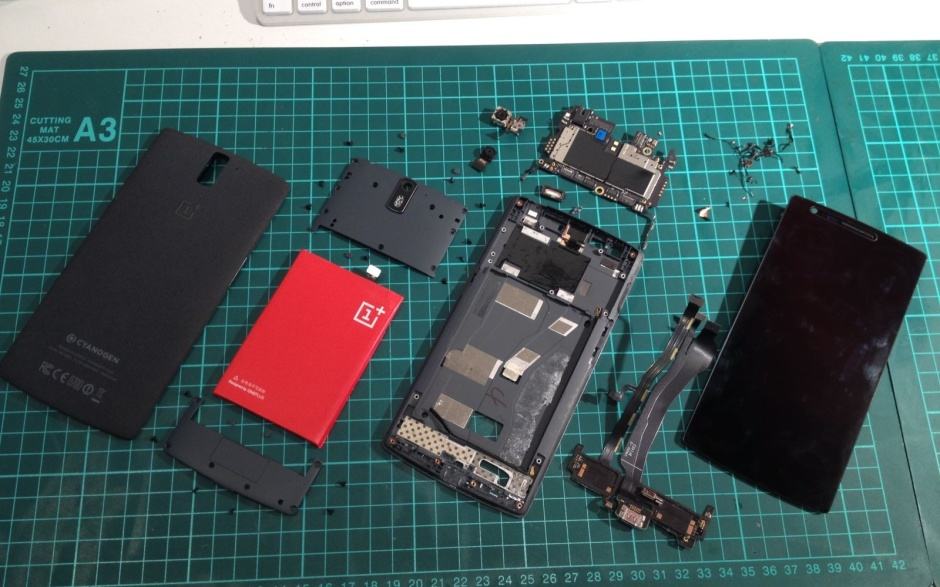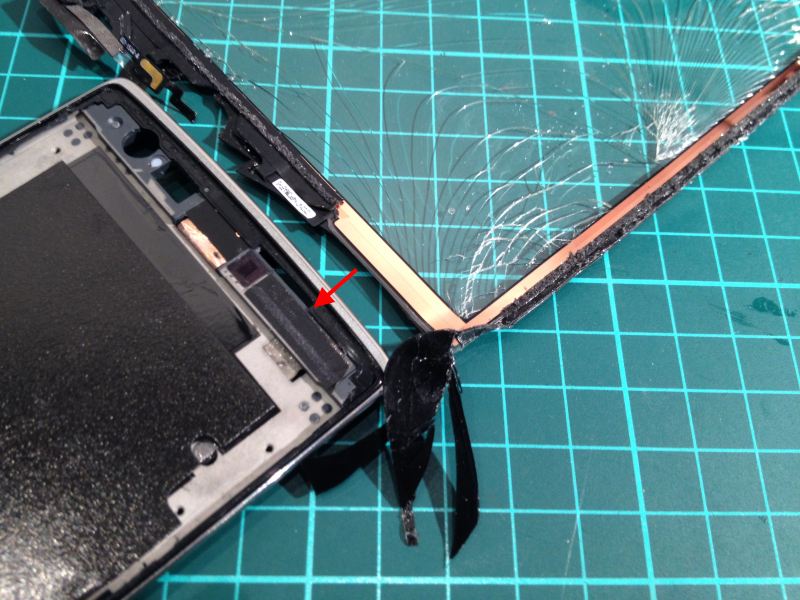OnePlus One owner discovers the real cause of its touchscreen problem

Tearing down the OnePlus One. Photo: vantt1
OnePlus promised to fix the One’s frustrating touchscreen issues for good with its latest CM11S software update, and yet lots of users are still taking to its forum to complain about the problem. According to one user, that’s because the issue has nothing to do with buggy software, but rather the way in which the handset has been put together.
Many OnePlus One owners will tell you that their smartphone is the best you can buy right now — particularly at just $299 — but many others have been plagued by various issues that have made their experience a very depressing one. One of the most significant problems with the handset’s touchscreen.
Sometimes, affected Ones simply don’t detect touch input; other times, they detect touches that were never made and do things you don’t want them to do. Users have also found that the display can jump around sporadically when scrolling pages or using different multitouch gestures, such as pinch to zoom.
https://youtu.be/S6drgJb6OFg
OnePlus has been working hard to eliminate the issue with software updates, and its latest CM11S build promised to fix it for good. But unfortunately, it looks like the problem will never be fixed by a simple over-the-air patch, because it’s hardware rather than software that is to blame, one user claims.
“I went on a little investigation, because I’m actually quite familiar with problems like this,” says vantt1 on the OnePlus forum, who pulled his handset apart to get to the bottom of the problem. After removing its display, vantt1 found what he thinks is the real cause of the One’s touch issues.
“As suspected, the digitizer flex makes direct contact to the metallic chassis before being connected to the logic board,” he explains. “And sure enough, when the flex is isolated from the chassis, the problem disappeared. The phone had no problem registering all 10 touches, and every touch was more responsive than ever.”
Vantt1 suspected this could be the problem after having similar issues with an iPad mini.
“The iPad Mini suffers from a very similar grounding issue when the digitzer gets replaced,” he says. “The original digitizers are all insulated properly from the factory, but when it breaks and needs to be replaced, the replacement screens don’t come with the insulating tape pre-installed. If not insulated, the digitizer makes contact with the inside of the aluminum unibody, and thus creates the grounding issue.”

Here’s where the flex cable makes contact with the One’s chassis if no tape is applied. Photo: vantt1
So, why does this issue affect some OnePlus One handsets but not all? Well, vantt1 believes that rather than using a “properly isolated digitizer” or tape like other smartphone manufacturers, OnePlus used glue to try to keep the digitizer cable from making contact with the handset’s chassis.
Because different amounts of glue are used on each phone, those that had a liberal helping applied have fewer touchscreen issues — or none at all — than those that didn’t get much glue at all.
It seems to make sense, and it finally explains why OnePlus has struggled to completely eliminate this issue despite numerous software updates. But it’s not exactly good news for One owners, who either have to live with the problem knowing it will never be completely fixed, or do what vantt1 has done and pull their handset apart to apply some tape.
Of course, the other option would be to talk to OnePlus about the issue and try to get it fixed under warranty, but given that the company sees this as a software issue, it’s unlikely to help. We’ve contacted them for their view on vantt1’s findings and we’ll update this post when we get a response.


